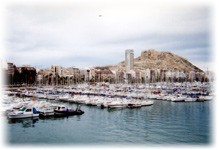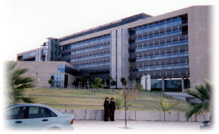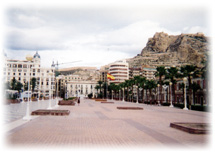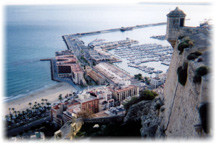
 得到中国驰名商标为止的路途
得到中国驰名商标为止的路途驰名商标在中国商标法第13条中被规定为,在中国有关公众中被广泛认知并拥有高度名声的商标。近几年,外国商标也被允许得到驰名商标的认定,至今为止,得到驰名商标认证的日本企业仅有20家左右,可见, 得到驰名商标的认定并不是一件简单的事。
在中国上海引发的有关商标权的纷争里,我公司参与了侵害诉讼、商标登陆异议申诉事件。最终,在诉讼中取得了胜诉,异议申告事件里也获得了取消商标登陆的判决,在这之中发挥了重要作用的就是驰名商标。以下是事情概略的说明。
背景 卡西欧计算机株式会社在中国有着“卡西欧”、“CASIO”、“卡西欧 CASIO”等多种登陆商标。在此情况下,2005年7月,上海的电动车制造公司提出了同一商标“卡西欧”、“KAXIOU”的申请愿望, 此事被公告了出来。

 1.商标权侵害诉讼
1.商标权侵害诉讼
这个上海的电动车制造公司不仅提出了上述的申请愿望,还把商标“卡西欧”以及“KAXIOU”标注在了电动车上进行了销售。
对此, 卡西欧计算机株式会社最初主张了第9类、第14类的率先登陆商标的著名性,但是法院不对著名性进行判断,因此,针对以“陆地车”作为指定商品,盗用“CASIO”的商标来登陆的行为,我们提出了基于商标权法律的商标权侵害诉讼。也就是说对方制造贩卖的电动车商标的使用行为侵害了商标权的法律。
2007年4月,在上海市第一中级人民法院进行了一审,类似这些的商标以及商品的相似性,商标“CASIO”的高度知名度得到了认证,商标权侵害的诉讼得到了肯定。对方表示不服,想上海市高级人民法院提出了控诉,但一审判决还是得到了维持,商标权侵害的事实得到了认证。
在此过程中,重要的一点是,“CASIO”和“卡西欧”的类似性得到了确认。“卡西欧”的拼音标记是“KAXIOU”而不是“CASIO”,所以得到类似性的认可是很困难的。这是因为长年的商标使用,使得中国的一般公众间认可了“卡西欧”等于“CASIO”这一事实,所以才获得了中国的司法机关的认定,这可以说是一个意味重大的判决。

 2.商标登陆异议申诉
2.商标登陆异议申诉
和侵害诉讼事件虽然顺序有些反了,但在2005年9月,卡西欧计算机株式会社向商标局提出了希望对方取消商标登陆的异议申诉。
卡西欧计算机株式会社的商标“CASIO”、其中文标记“卡西欧”不仅在中国国内而且在世界各国都被广泛的登陆,而且“CASIO”对应了“卡西欧”的商标已经是在中国公众之间被广泛认知的事实。卡西欧公司强调了这一事实。并且,还提交了上述上海市高级人民法院的判决作为参考证据。
但是,2008年3月,商标局指出,卡西欧计算机株式会社的商标“CASIO”以及“卡西欧”的知名度和证明生成混淆可能性的证据还不充分,批准了对方的商标登陆。

 3. 再审请求和驰名商标申请
3. 再审请求和驰名商标申请
对批准登陆一事表示了不服的卡西欧计算机株式会社在2008年4月提出了对异议决定的再审请求,并一同提出了对登陆商标“CASIO卡西欧”申请驰名商标的要求。
在2009年5月的审判中,卡西欧计算机株式会社的商标“CASIO”以及“卡西欧”的著名性也就是说,是商标法第13条规定的“驰名商标”一事得到了认证。并且,对方商标和卡西欧计算机株式会社的商标属于同一商标,有生成出处混淆的可能性这一事实得到了认同,最终,对方商标“卡西欧”的登陆被拒绝了。

 4. 总结
4. 总结
申请驰名商标需要繁多的手续,对当事人来说是一件负担很重的事。于是,只有在日常中不断的提高商标的知名度才能得到有利的结果。审理中, 需要在中国国内的商标权保护的宣传活动和广告宣传的大量资料,所以尽可能的收集大量的证据也很重要。在海量的证据中选择适当的证据,在认定过程中和各个机关的负责人取得密切的联系增强理解,也可以促进审理速度的加快。
在中国经济飞速发展的当今,在中国发生商标权的纷争越来越成为不可避免的事。这样一来,在这次的纷争中起到关键作用的驰名商标制度也成为了越发重要的因素。

 Notice of Revision to the Design Law Notice of Revision to the Design Law
Expansion
of the Applicability for the Protection of Screen Designs and
Modifications to the Requirements for Filing Applications for the
Similar Design by the Same Person.

We would like to hereby inform you that recently the Japanese
Design Law has been revised and from April 1st of this year the area
covered by the Design Protection Law has expanded.
The significant areas for the expansion of the articles protected are:
- Broadening of the coverage of screen design protection
- Modifications
to the requirements for the filing of applications for the similar
design by the same person and if the application is not made on the
same day there is the possibility to make use of a related design
procedure.
Please refer to the following details

 1.Expansion of the Applicability for the Protection of Screen Designs 1.Expansion of the Applicability for the Protection of Screen Designs
(1)
Heretofore “only the images that are absolutely necessary for the
formation of an article” have been protected and although items such as
the time displays on liquid crystal clocks, the selection menus and so
on shown on the front page of mobile phones have been designated
as protected articles, the images used in the operation of the
aforementioned articles, for example the screen displaying the address
book feature on a mobile phone, and other display features related to
the equipment shown on screen display designs, have been outside
the jurisdiction of the Design Protection Law.
| (2)
However, according to this revision, certain articles that relate to
screens on operating features other than the first menu screen, such as
the designs for the display screens on recording time-setting devices
for recording and playback equipment for video discs, television
monitors that can be used simultaneously, or the design of display
screens on other items such as the screen displaying the address book
feature on mobile phones, have been newly added as articles for design
protection. |
Example of a Newly Protected Screen Design
(Magnetic disc recorder)

 The operational feature of the magnetic The operational feature of the magnetic
disc recorder shown on the TV screen
|
|
|
In addition, according to the revision, the design of display screens
for business software or game software that are sold independently of
the main product, are not included as articles for protection.

 2. Modifications to the Requirements for Filing Applications for
2. Modifications to the Requirements for Filing Applications for
the Similar Design by the Same Person
(1)
Regarding the protection of mutually similar designs, heretofore
Article 9 of the Design Law (prior application) has made it an
exception to protect related designs and enable the exercise of rights
for each design, limited to the case whereby the same applicant files
the application on the same day.
(2)
The revision this time has modified the part of the law regarding
related designs which have been accepted only when applications are
made on the same day. The revision limits the registration of
related design applications to the period up until the day that the
application of first design is laid-open as a first publication.
This revision simplifies the usage of the system for related designs in
that it is not limited to the case whereby variations of a design are
created during the same time frame, but also accepts the protection of
design rights for design variations that are additionally developed
after watching market acceptance or trends after the initial design is
put on the market.

 3.Other Revised Points
3.Other Revised Points
In addition to the above points, the following points have also been revised.
| ① |
Extension
of the period for the continuation of design rights (heretofore 15
years from registration - revised to 20 years from registration) |
| ② |
Concretization of the range of similarity of designs
(Concretized that judgment of similarity is made not by the creator of the design but from the viewpoints of consumers) |
| ③ |
Article
3, item 2 of the Design Law (Modification to the application of the
policy regarding applications made by the same person) |
| ④ |
Revision to the protection of the confidentiality of designs
(The request of confidentiality is approved not only at the time of
filing the application but also at the time of paying the registration
fee) |
| ⑥ |
Revision
of the applicability of the policy regarding cases other than the loss
of novelty (increased to 30 days from the period of filing a written
representation) |
| |
|
Please contact us if you have any queries regarding the above matters.
We will be happy to answer your questions.
 Notice about the commencement of Retail Service Trademark System
Notice about the commencement of Retail Service Trademark System
As
from April 1st of this year, we hereby inform you that a system to make
possible the registration of trademarks or brands for retail services
has been introduced.
The system for retail
service trademark protection is a system for protecting the trademarks
that retailers or wholesalers use, including trademarks used for signs
on their premises, shop assistants' uniforms, or shopping carts, and
also covers mail order sales.
The trademarks
used by retailers heretofore have been protected by the procedure to
register trademarks for products being handled. Retail services have
been protected by the acquisition of rights for the products specified
in Nos. 1 to 34 of the total 45 classifications for products and
services. Although price-tags for products and folded leaflets, for
example, have been protected until now, the display of trademarks on
such items as shopping carts or shop assistants’ uniforms, has not been
protected.
However, through the
introduction of the retail services trademark system this time, in
addition to the heretofore protected product trademarks on price-tags
and folded leaflets, the trademarks shown on shopping carts, shopping
baskets and shop assistants’ uniforms are to be inclusively protected
as well.
Specifically, services including retail sales have been added to retail service classification No. 35.

Hereunder the following services offered by department stores and general supermarkets have been newly approved:
| (Retail
services or wholesale services for a variety of goods in each field of
clothing, foods and beverages, and living ware, carrying all goods
together) |
For
trade in any other individual product that is not mentioned in the
table above, it is necessary to file an application with a description
of the product which specifies the type of the product to a certain
level.

For example, in the case of the trade in clothing, the following services have been newly designated:
| (Retail services or wholesale services for clothing) |
And in line with this, the kind of products in retail sales must be
specified in detail and an application should be filed accordingly.
A particular feature of the cases where an application is made for
retail sales of a specific product, the trademark of the specific
product is identified and a cross-search takes place. In the case of
filing for retail sales of a specific product, an examination of the
trademark applied and registered for such specific product will also
take place.

For example, in the above case when an application is made for:
| Retail services or wholesale services for clothing |
apart from the trademark for the retail sales of clothing, there has to
be an examination of the application and registration of the trademark
according to the product classification No.25:
and provisionally in the case of somebody else having already made an
application for, and granted with registration of, the same or similar
trademark for “clothing” within the classification No.25, rights to the
retail sales of the clothing cannot be granted.
However, in the case of it being the same person, this is not applicable.
Regarding
the ‘department stores and general supermarkets’ mentioned above, in
the case when a cross-search of a product classification does not take
place, this is because department stores and general supermarkets
handle a broad spectrum of products and their relationship with
specific products is deemed to be weak.
Also, in the case of
specifying and making an application for retail services for products
in more than one category as shown below, the applicant may be
requested to present written proof of usage of the trademark that the
applicant applied for at the stage of examination in order to ascertain
whether the trademark being applied for is being used in the specified
retail sales service.
Retail services or wholesale services for foods and beverages
Retail services or wholesale services for cosmetics, toiletries, dentifrices, soaps and detergents
Retail services or wholesale services for clocks, watches and spectacles [eyeglasses and goggles] |
Also,
applications made between April 1st and June 30th are dealt with as
applications filed on the same day in a limited case where such
applications are for retail sales. In this case, applications
that can show actual proof of trademarks being used will be given
priority for registration, and in the case that both trademarks are
being used, it will be possible that both trademarks will be accepted
for registration.
We will be happy to answer any questions you have
about this system, so please do not hesitate to contact us. Since
the commencement of this retail services trademark system on 1st April,
our institution has already been dealing with a large volume of
applications to utilize this system.

 The Story of our Struggle ot Acquire the First Design Application in the European Community The Story of our Struggle ot Acquire the First Design Application in the European Community
In
this report I would like to give an account of the experiences we had,
in particular the interesting aspects, when filing our first design
application in Europe.
 First
of all, I would like to show these pictures of OHIM (Office for
Harmonization in the Internal Market) and the cityscape of Alicante
(Spain) where OHIM is located and give a simple explanation about what
happened. First
of all, I would like to show these pictures of OHIM (Office for
Harmonization in the Internal Market) and the cityscape of Alicante
(Spain) where OHIM is located and give a simple explanation about what
happened.
|

View of Santa Barbara Castle |
 The
Europe Community Design System is a unified set of regulations that
covers the whole European Community and is a relatively new system that
came into effect on April first 2003. The
Europe Community Design System is a unified set of regulations that
covers the whole European Community and is a relatively new system that
came into effect on April first 2003.
In this design system,
there are two different systems. One is an Unregistered Community
Design System in which the design right is protected within the public
domain of the whole European Community for a period of three years from
the effective date that a design is used even without following
registration procedures.
The other system is a Registered Community Design System which is able
to provide protection of the design right for five years after the
application has been made. It is based on a registered procedure
(effective for a maximum of 25 years if renewed).
The application system for registered designs in the Registered
Community Design system started on April first 2003. So the
application date should be from April first 2003 but the actual
reception of applications started on January first 2003.

The Front Entranceway to OHIM |

View of the Outside of OHIM |
 On
the request of our client, we made preparations to obtain the first
application number that would represent the commemoration of being the
first to apply to this new system. We gave up our New Year's holiday,
and went to OHIM in Alicante, Spain, to follow the application
procedures. On
the request of our client, we made preparations to obtain the first
application number that would represent the commemoration of being the
first to apply to this new system. We gave up our New Year's holiday,
and went to OHIM in Alicante, Spain, to follow the application
procedures.

View of Santa Barbara Castle
|
 As
there was no direct flight from Japan to Alicante, we had to make two
transfers before arriving in Alicante. This meant that we ended up
spending the whole day traveling. We looked enviably at the people who
were gathering for the countdown to the New Year and were in a fluster
as we couldn’t get a taxi to go to OHIM. But with the cooperation of
the local agent, we could file the application form at the very moment
it became January first 2003. As
there was no direct flight from Japan to Alicante, we had to make two
transfers before arriving in Alicante. This meant that we ended up
spending the whole day traveling. We looked enviably at the people who
were gathering for the countdown to the New Year and were in a fluster
as we couldn’t get a taxi to go to OHIM. But with the cooperation of
the local agent, we could file the application form at the very moment
it became January first 2003. |
 Although
we dropped our application into the special post box which was
installed outside the OHIM building, when the other applicants who were
also aiming to get the first application like us saw us putting our
application in the box they decided to send their applications by fax. Although
we dropped our application into the special post box which was
installed outside the OHIM building, when the other applicants who were
also aiming to get the first application like us saw us putting our
application in the box they decided to send their applications by fax. |
 View from Santa Barbara Castle
View from Santa Barbara Castle |
|
 Which
would be the real first application was in the hands of OHIM. We felt
nervous as we were waiting for the result. Fortunately, we were lucky
enough to obtain the first application. Which
would be the real first application was in the hands of OHIM. We felt
nervous as we were waiting for the result. Fortunately, we were lucky
enough to obtain the first application.
In this regard, although
we had a hard time from the preparation period, we were honored to have
our client obtain the first application for the new system in Europe
and were able to deal with all these procedures.
Finally,
we would like to express our appreciation to our client who gave us
this special request, and to the local agent, Mr. David Musker,
(http://www.jenkins-ip.com/peop/partner/d_musker.htm) for his great assistance.
|

